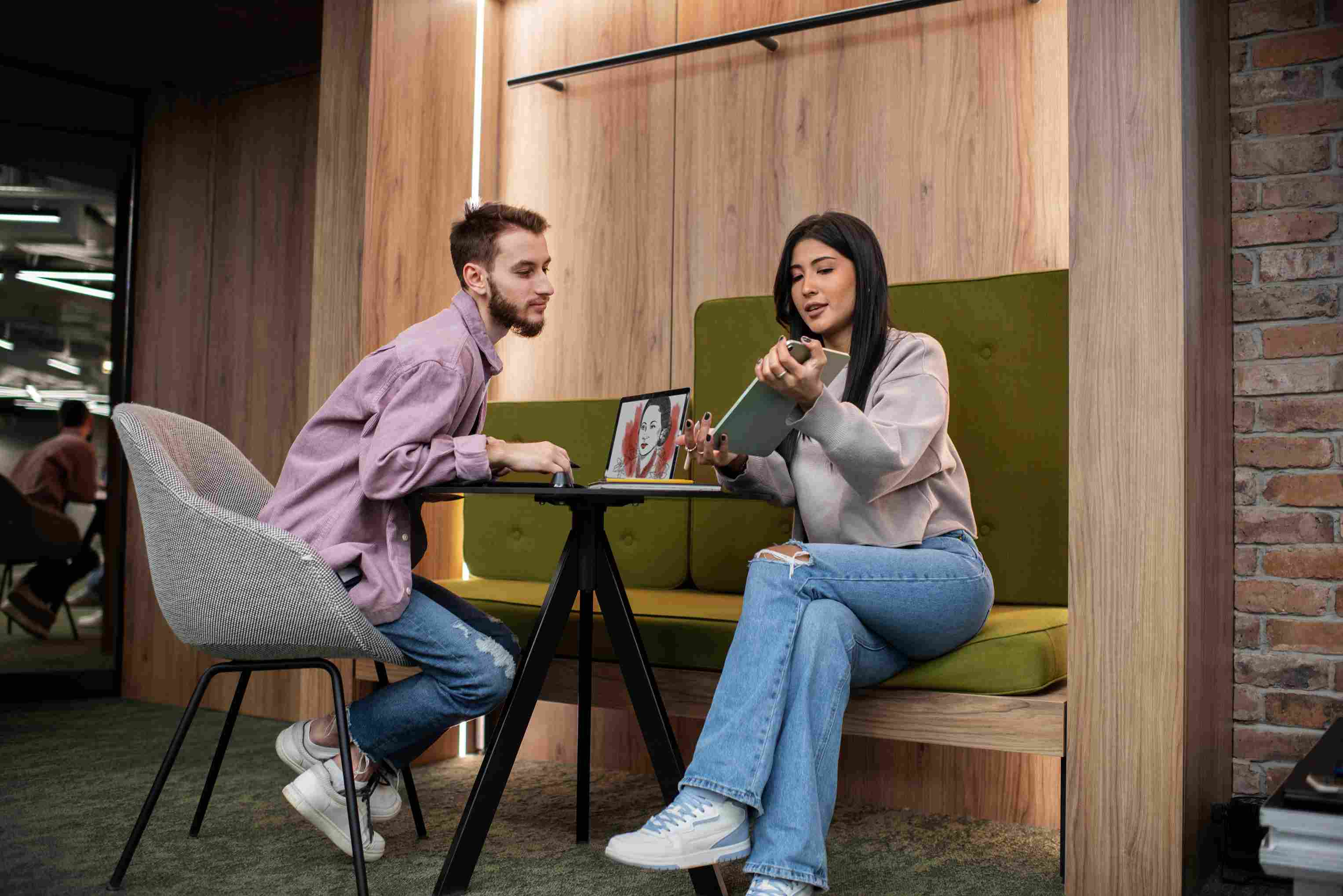

“Dreams feel real while we’re in them.”- Inception
That’s exactly how Pinterest works when it comes to furniture. A shopper sees a sofa pinned in a cozy studio apartment, a dining table styled for a family dinner, or a storage bed layered with throws, and for a moment, it already feels like home.
Pinterest doesn’t just display products; it places them in context. It stages them inside people’s imaginations. That’s why it feels less like scrolling a feed and more like walking through a showroom after hours.
Every Pin is already a room: the sofa tucked in its corner, the table set for dinner, the lamp casting the right kind of glow. You can’t sink into the cushions or pull a drawer open, but you can walk through the idea of it.
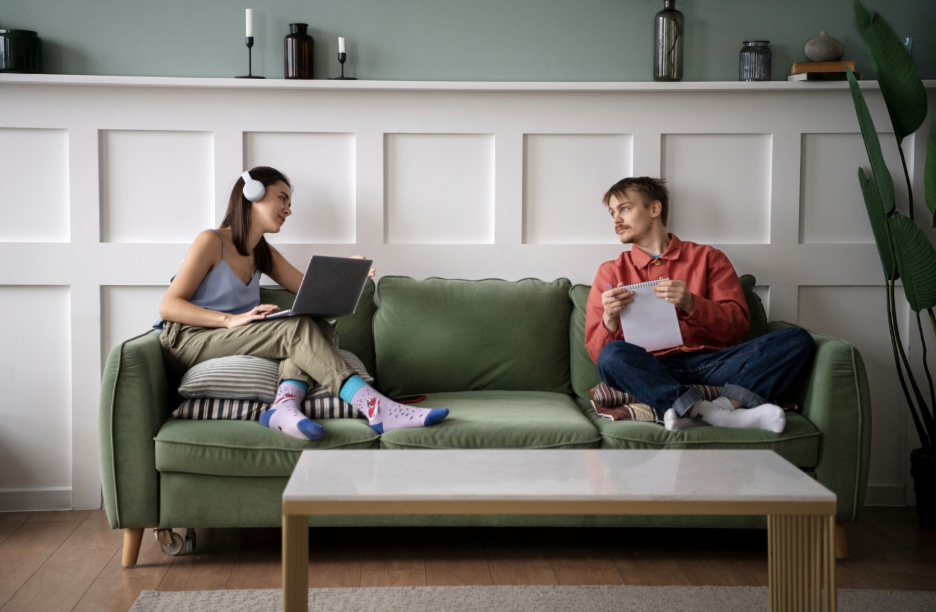
Think of Pinterest as your pre-commerce buddy, the place where shoppers plan before they pay.
Furniture isn’t fast fashion. Shoppers don’t impulse-buy a sofa. These are high-ticket, high consideration purchases they research, plan, and compare before committing
That’s why Pinterest has become such a powerful space for furniture. It’s now one of the largest home décor platforms globally and 9 out of 10 Pinners use it specifically for research and inspiration in their home décor shopping journey.
And while logic plays its part in size, price, and durability, the final push is almost always emotional. Pinterest leans into that side of the brain, evoking the right feeling in the right context and setting the right mood that makes a piece feel like it belongs.
Let's take a moment to understand Pinterest’s potential:
And the visibility goes even further.
Pinterest SEO doesn’t stay locked inside the platform. Well-optimized furniture Pins can appear on Google’s top 5 results too. Search “minimal apartment sofa inspo” and you may see a Pinterest board in the top results, with the first Pin showing a staged sectional.
For merchants, that’s double the reach from a single piece of content.
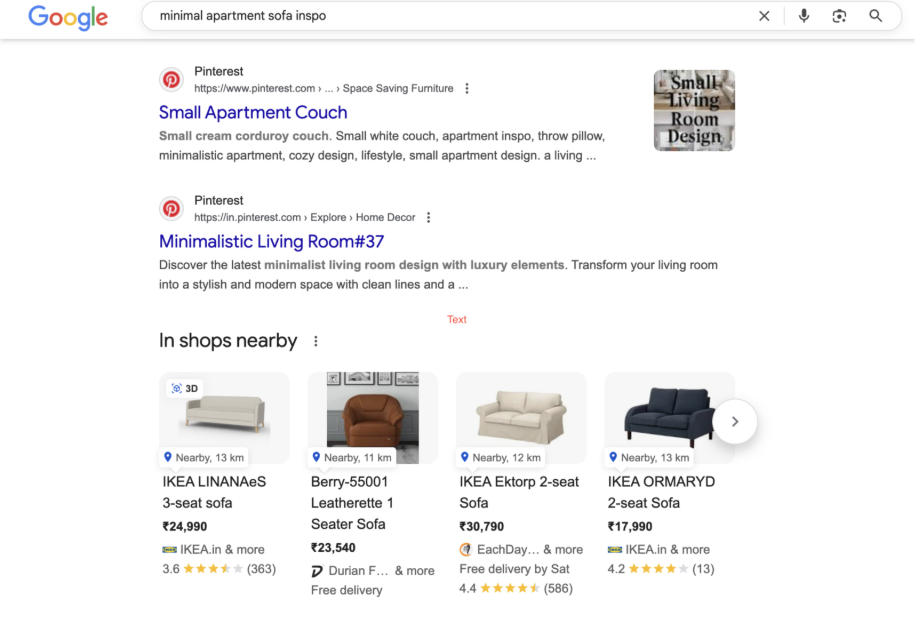
The real question is how this works in practice. It’s one thing to say Pinterest inspires, but another to see how furniture brands turn that into intent and checkouts.
Let’s break down the strategies that are working:
Most merchants upload a catalogue once and leave it. Boobam, a Brazilian furniture marketplace, treated Pinterest like a living showroom by refreshing the feed daily, curated by shopper intent, and evolving with trends.
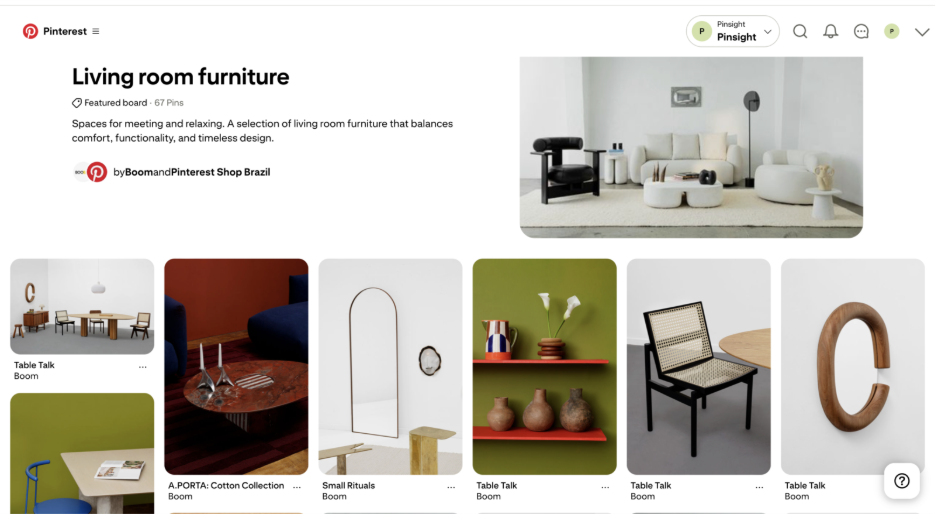
Treat your Pinterest catalogue like a living storefront- refresh it, frame products in context, and align with what shoppers are actually searching for. The merchants who stay alive in trends and details are the ones who get discovered.
They leaned into Pinterest’s Idea Pins and styled storytelling. Instead of just posting a dining table, they created content like “How to Add Interest to a Dining Space” showing a fully styled room with textures, lighting, and accessories.
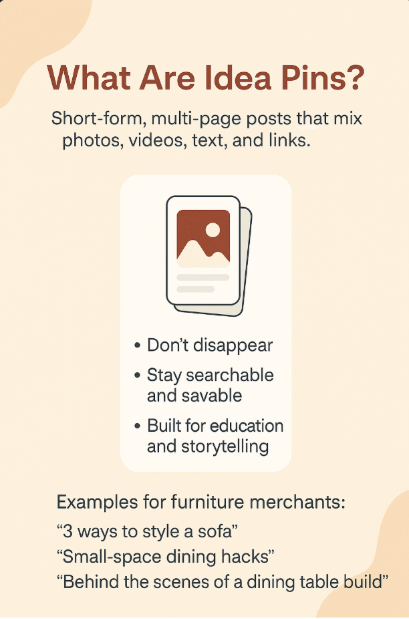
For Instance, Life Interiors brought their SS22 living room collection to life with Idea Pins, styled and shared in the most Pinterest-worthy way.
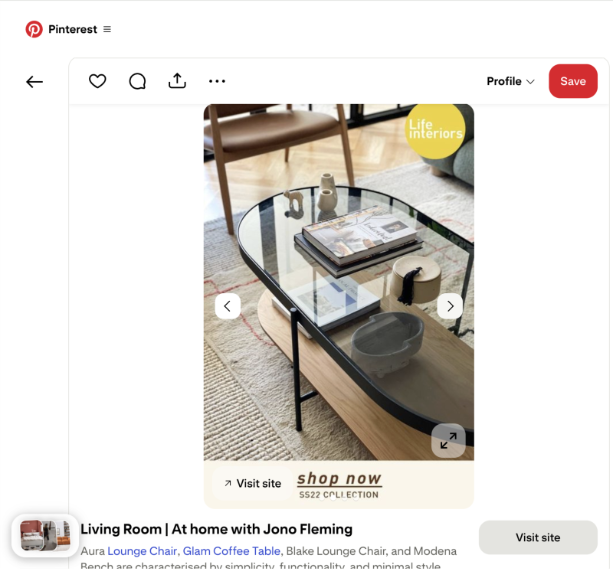
By turning products into stories, they became design guides. Shoppers pinned ideas, not just items. That led to longer engagement, more saves, and stronger mid-funnel signals.
And it paid off. Their campaign push delivered a 22× ROAS and an 82% lift in conversions month over month.
Don’t just pin products pin possibilities. Show how your pieces solve real design problems, and shoppers will remember your brand all the way to purchase.
DFS, one of the UK’s largest furniture retailers, built a campaign that followed shoppers from dream to decision. They used full-room videos, Idea and Quiz ads, and Shopping ads each tailored to keep the shoppers engaged.
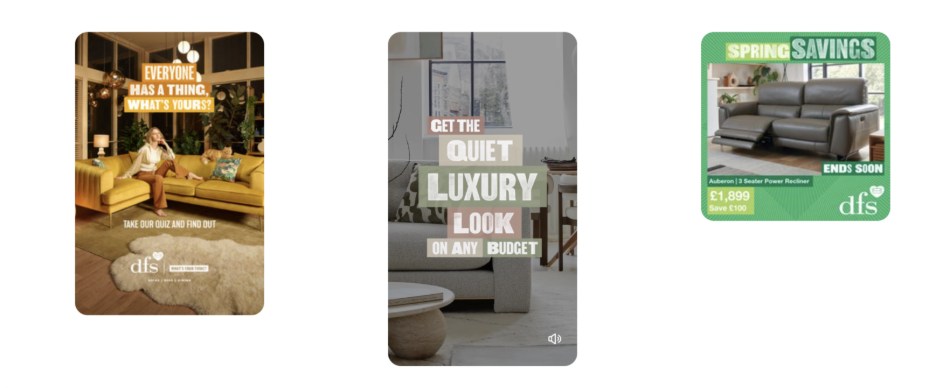
First-time buyers don’t impulse-buy furniture they imagine, plan, and compare. DFS showed that when you match your creative to their full journey, Pinterest can guide shoppers from that first pin to a final checkout.
Before the case, a quick look at automated bidding.
Manual bidding means setting a fixed price per click, but on Pinterest, where trends shift quickly, that’s like using yesterday’s forecast for tomorrow’s picnic.
Automated bidding lets the algorithm adjust in real time, raising bids when a Pin is likely to convert and lowering them when it’s not. Paired with Pinterest Analytics, it shows which Pins and audiences are worth the spend.
That’s what Made.com did. The British furniture retailer combined automated bidding with styled Product Pins, lifestyle photography, and refreshed theme boards. The result: less guesswork, smarter spend, and Pins reaching the right shoppers at the right moment.
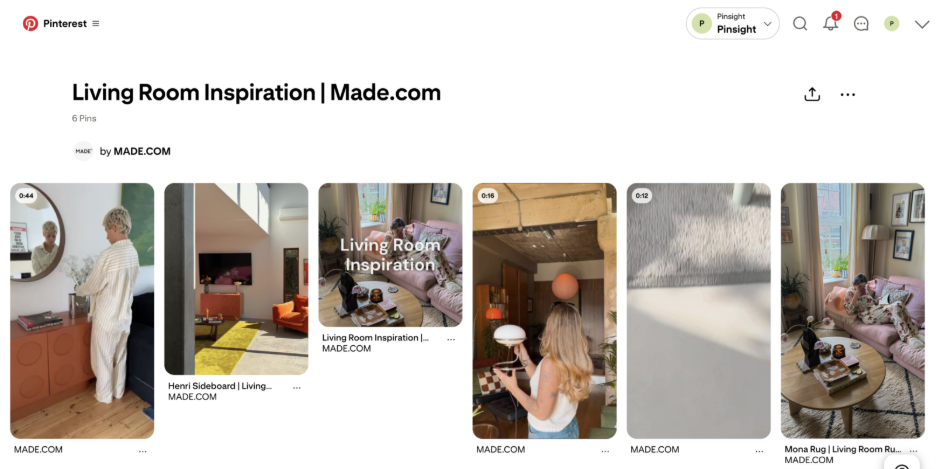
For furniture brands, it’s not enough to just have good Pins. Distribution matters as much as design. Automated bidding frees you from micromanaging spend and lets Pinterest optimize where your Pins can win.
Your next checkout could start on Pinterest
Pinterest doesn’t replace Google. It shapes what happens before it. By the time someone searches, their shortlist is already influenced by Pins they’ve saved. The purchase may close elsewhere, but the preference is built here.
For merchants, that shift matters. Competing only at search means fighting on cost and keywords. Showing up on Pinterest means being part of the decision earlier, when shoppers are still open and most receptive to influence.
The spark begins here, long before the transaction.